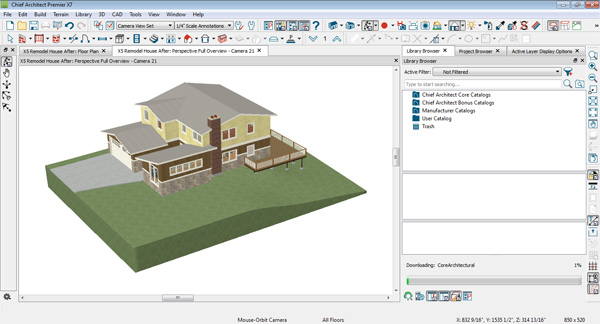

This pony wall have the upper and lower wall types reshaped in a Cross Section/Elevation view. A wall affected by this setting is specified as a Pony Wall and the upper wall is defined on the Wall Types panel. Using Lower Wall Type if Split by Butting Roof to Apply Drywall to Part of an Exterior WallĬheck Lower Wall Type if Split by Butting Roof to specify the wall type for any portion of the selected wall located beneath an adjacent, abutting roof plane, should one be present.If you do not see wall framing, first make sure that you have built wall framing in the plan, second that you have not checked 'Retain Wall Framing' in a wall where it was not built, third that the Wall Type has been correctly configured with a Framing material, and that the Wall Framing is set to display in your currently active layer set for the view. You can use the Reference Display to check whether or not walls are aligned, or to see if the walls are too far apart for the edit tools to display. In order for these edit tools to be available, the areas of the walls in question must be partially aligned, or overlapping. Walls can be aligned between floors using their Main Layer by clicking the Align With Wall Above or Align With Wall Below edit buttons. Aligning Walls Between Floors in Chief Architect.The inner wall should be specified as a Furred Wall on the Structure panel of the Wall Specification dialog.Ī parapet roof can be created using half walls, or solid railings, and then specifying a roofing material for the Parapet room’s floor. In most circumstances, the Main Layer should be specified as the structural layer of the wall, particularly when the wall is a framed type.įurred Walls are placed against the inside of a primary wall, typically an exterior wall. Message: The Main Layers for this wall type are unusually thin.
#Chief architect software disto windows
The CAD to Walls tool can be used to convert CAD lines in floor plan view into architectural objects like walls, windows and doors. Using CAD to Walls from an Imported DWG/DXF.

If the program is unable to determine where you need an attic wall, then manually draw the wall where it is needed and specify it as an Attic Wall in its Specification dialog. In Chief Architect, a pony wall, sometimes referred to as a split wall or stacked wall, is a single wall composed of two separate wall types one built above the other.

If you see siding on the wrong side of a wall, use the Reverse Layers tool to correct it. Specify the pitch for a roof plane building over a particular wall or railing on the Roof panel of the Specification dialog.

If you do not see all of your wall layers displayed in the plan view, you have checked the 'Walls, Main Layer Only' layer to display in your Layer Display Options dialog. Toggling the Display of Wall Layers on and off.Wall intersections in your plan are easy to modify using Chief Architect. If the walls in your Chief Architect plan look jagged, this article will show you a fast and easy fix. Fixing Jagged or Off-Angle Walls and Lines.Changing the Color or Material of a Single WallĬhanging the color of a single wall within your Chief Architect plan is easy and fast.


 0 kommentar(er)
0 kommentar(er)
